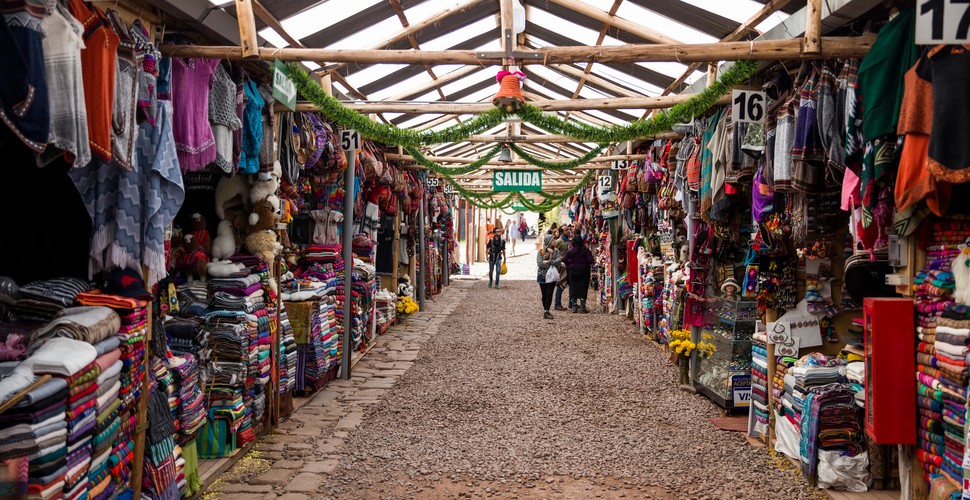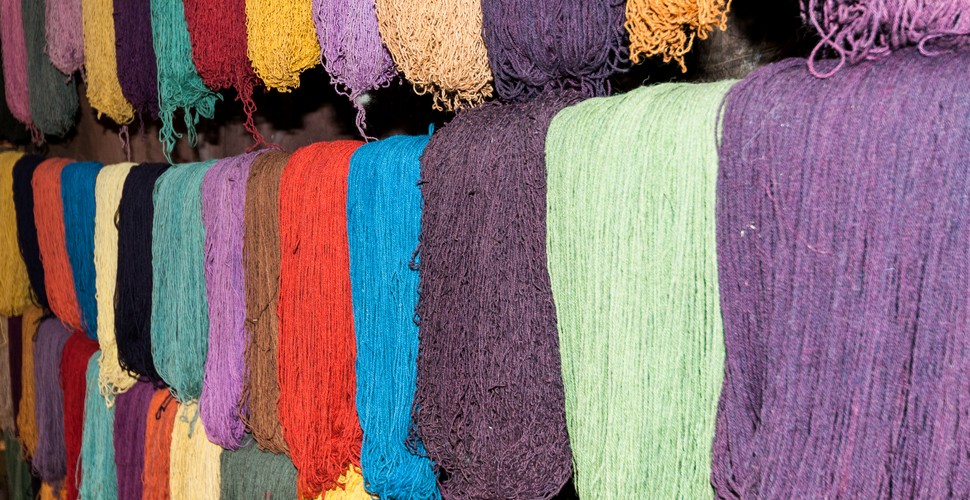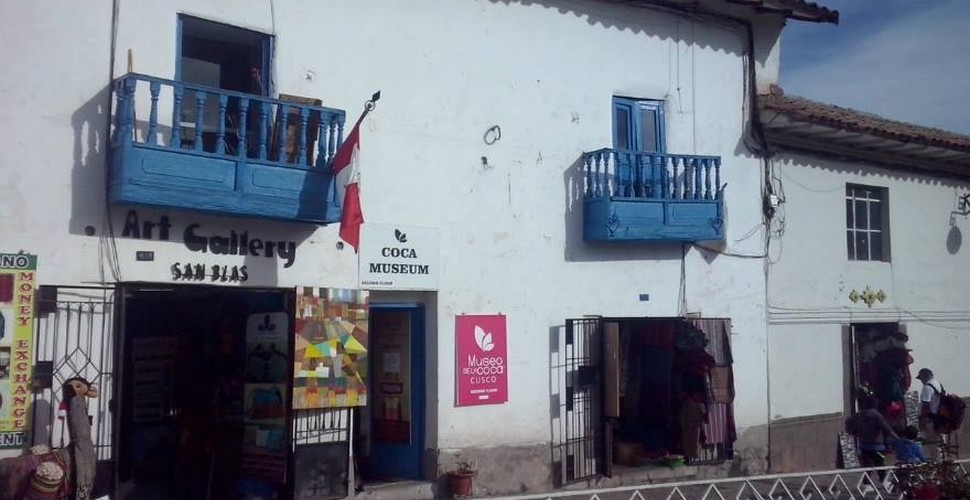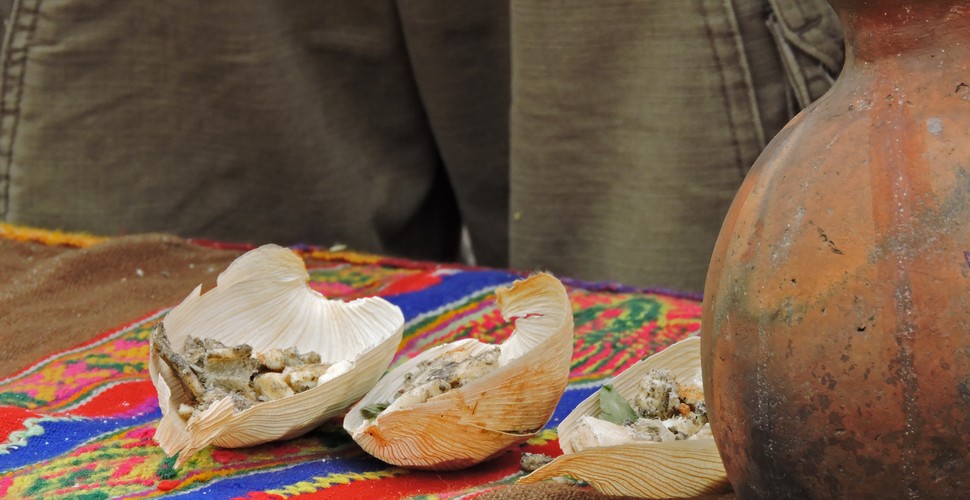
The Best Cultural Activities in Cusco
Written by:Valencia Travel
Last Update: 2025-06-26
Culture in Peru is a fascinating mixture of the ancient Inca civilization, the Spanish conquistadores, and immigrants such as Chinese, Japanese, and Europeans. And the main thing that binds them together is the firm belief in the importance of family and religion. The Cusco region is steeped in history and culture dating back to pre-Inca times, making it perfect for cultural trips that will immerse you in the living culture of Cusco and the Andes. The Andean culture has a lot of great traditions and techniques that involve weaving, farming, cooking, and building. There is nothing better than learning these traditions first-hand from the community members who are still using them in their daily life. Here are some of the best cultural activities in Cusco.
Pachamanca
Explore San Pedro Market
A visit to any Peruvian market introduces you to the sights, sounds, and smells savored elsewhere in Peru. The San Pedro market in the center of Cusco is the city's central hub of Andean life. If you are only visiting Peru for a short time and looking to experience some authentic vibes, we highly recommend that you make a beeline for this market and the surrounding streets. Make sure you order fresh fruit juice with various concoctions, including black beer and a frog! This market alone will be an experience for all your senses during your trip to Cusco.
San Pedro Market
Indulge in Chocolate Tasting and Cooking Classes
Although ceviche is Peru's best dish, in Cusco, you can sample the Andean version, made with fresh river trout. Cusco offers travelers excellent opportunities to get up close and personal with Peruvian cuisine. There are many cooking classes on offer where you will visit a local market, learn about the ubiquity of Peru's famous potatoes and corn, then head to the kitchen to create your dishes and learn about the history of food in Peru with homemade Pisco sour. A visit to the Choco Museo is also insightful and delicious into the history of chocolate in the region and the bean-to-bar production of the delightful cacao. Take part in a chocolate class to make your chocolates with your chosen fillings! Mmmm!
Centro De Textiles Tradicionales Del Cusco (CTTC)
Any visitor to Peru will quickly discover its incredible textiles, and you will have to decide just how much you can fit in your backpack or suitcase to take home. The CTTC textile museum offers the best insight into the social story and history of these colorful traditional fabrics and textiles - from how they are made, their significance within communities, and the effort to keep this ancient craft and knowledge alive. The museum also has a group of gossiping ladies traditionally creating handmade pieces each day and some excellent locally sourced pieces to purchase. It makes sense to stop here after you visit the nearby Koricancha.
Alpaca Yarns in CTTS, in Cusco
Pisco Museum
While not quite a museum, if you're anything like us, long days of exploring ruins, and colonial religious art, will likely mean that come the evening, you may be ready for a drink! Created by an ex-pat with a passion for Peru's most famous cocktail, this museum showcases a wide variety of infused Piscos and imaginative cocktails in a funky setting that comes alive at night. For those that want to delve deep (or enjoy a drink), they offer tastings of the different types of Pisco.
Coca Museum
Andean cultures have cultivated coca for thousands of years. The history of the plant's use is rooted in the pre-Columbian civilizations that stretched across the mountainous ranges of South America, long before the arrival of the white powdery drug that gave the plant worldwide recognition. People traditionally chewed coca leaves for nutritional and religious reasons. Workers and warriors alike would carry it between their teeth because they believed the plant could ward off hunger and bolster stamina. Coca is still an essential part of the modern Andean culture. People chew the leaves or steep them to form a potent tea. Because it's toted as an antidote to altitude sickness, it's common to see tourists sipping coca tea to acclimate to Cusco's elevation or power up before trekking the Inca Trail.
Coca museum, San Blas
Sacred Valley Weaving Community
Several traditional weaving villages in the Sacred Valley have opened their doors to visitors. The town of Huilloc is located 30 minutes from the district of Ollantaytambo. Huilloc and Patacancha are the direct native communities descendants of the Inka lineage, who have preserved the culture, tradition, and local ways of life for more than five hundred years; it is as if time had stopped, in this area, the inhabitants are interrelated with the visitors as a form of integration, to the societies that have the interest to know them, one can observe and be part of this Andean culture, where the textile works and the exquisite color of their clothes stand out.
In the small Andean village of Ccaccaccollo, you're likely to find many women seated in a common outdoor area (assuming the weather permits) weaving colorful textiles as their ancestors did centuries ago. The Ccaccaccollo Women's Weaving Co-operative was formed to create economic opportunities for the women of the community, who had no education, were illiterate, and were occupied maintaining their households and raising their children. They now have a viable opportunity to support themselves through their traditions and living culture in this high region of the Sacred Valley.
Attend a Pago a la Tierra
Join an indigenous community in a traditional Incan ritual called "Pago a la Tierra", translated as "Payment to the Earth". This ceremony is a sacred offering of the Andean people to pay tribute to the "Pachamama" (Mother Earth) and invite her blessings. Typically led by a shaman, the ritual involves preparing a hole in the ground which the participants adorn with various foods symbolizing what they are asking Mother Earth to provide. The shaman leads a Quechuan prayer to the Apus (the Incan gods) in the surrounding mountains for a bountiful harvest and good fortune for family and friends in the coming year. One of the best cultural trips you can take part in Cusco.
Pago a la Tierra
Pachamanca
A culinary tradition since the Inca Empire, Pachamanca has long been an essential part of Peruvian cuisine. There is evidence that the technique pre-dated written records, but researchers aren't sure how long ago it began. Quechua for "earth oven," Pachamanca refers explicitly to the method of cooking food underground with hot stones, as the dish can be made with many variations of Andean ingredients. These usually include several marinated types of meat native to the highlands, such as lamb, goat, pork, chicken, alpaca, or even guinea pig (called "cuy" in Peru). Sometimes a whole animal is cooked! Vegetables such as potatoes, green lima beans, sweet potatoes, yucca, corn, tamales, humitas, and chiles are also included. Like many parts of Inca culture, the preparation was all about the ritual. Preparing the Pachamanca was meant to celebrate life, the food offering fertility and rejuvenation. The Incas believed that cooking the food underground offered respect to Pachamama, the Incan "Mother Earth," as the food was returned to the earth before being eaten.
Music
Celebrate the essence of Andean culture through the wealth of its legendary music. Become immersed in its unique sounds, notes, vibrations, flutes in all shapes and sizes, swirling skirts, and panpipes that transport you to another dimension. Explore the authentic music that intrinsically imparts the Andean worldview through a native perspective, an ethnic-musical journey to the heart of Peru; what better way to immerse yourself in local culture than to visit an Andean community in Cusco, where you can witness and participate first-hand in the ancestral music of The Andes!
Traditional Instruments
Find out more about the best cultural activities in Cusco here with Valencia Travel Cusco.
 Aventure
Aventure
 Cultural
Cultural
 Gastronomy
Gastronomy
 Wellness
Wellness
 Local Living
Local Living
 Luxury
Luxury













